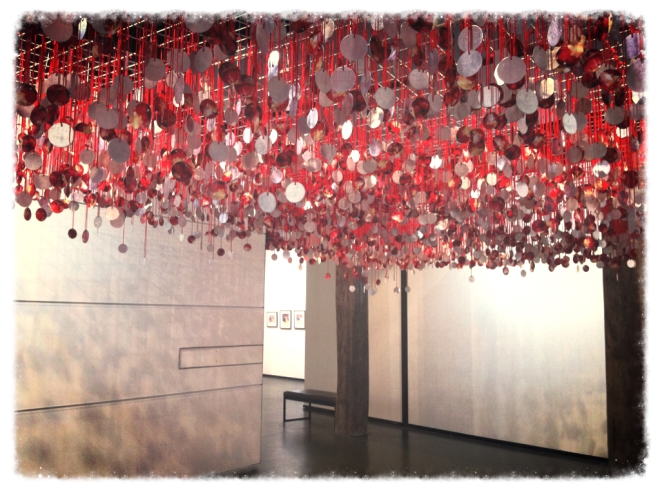I imagine there are few family history researchers whose families don’t contain ancestors that served in the military. Although very much a novice historian, I’ve already found that most of my kinsmen from my grandfathers’ and great-grandfathers’ generations served in World Wars I and II – as did many of my older uncles. My brother too was a soldier; he served with the Scots Dragoon Guards during the 1980s and spent time in Israel with the UN peace-keeping force.
Most of my relatives came home from war, although they bore physical and psychological scars for the rest of their lives.
I’ve been thinking a lot about these ancestors recently. Partly it’s because we’ve just commemorated ANZAC Day, and as the 100th anniversary of the Gallipoli landings approaches (1915), New Zealanders and Australians are thinking more and more about how that appalling military tragedy – played out on the beaches and barren hillsides of the Dardanelles – became the forge that cast our sense of nationhood (I’ve written more about about that in another blog for anyone who’s interested).
But the other reason I’ve been thinking about the soldiers in the family is that I’ve been to see an installation at the Academy of Fine Arts in Wellington entitled Strange Fruit.
The ‘Strange Fruit’ of the title are 3890 military dog tags – one for each of the New Zealanders who served in Vietnam between 1964 and 1972.
The Returned Services’ Association (RSA) says of the installation:
My partner’s cousin served in Vietnam. I don’t really know him, but I have talked with one of his sisters about the young man, chaffing against a strict father and upbringing, who “escaped” to the army and found himself in combat. She says he doesn’t talk about his experiences; I understand that is true of many veterans, of many wars.
But of course Vietnam is different. Without underplaying the hardships that veterans of all conflicts experience, those who came home from Vietnam returned to a public that had largely turned against the whole idea of their country’s involvement in that war, and were anxious to forget. This has meant that, unlike those who served in earlier wars, Vietnam vets did not receive a great deal recognition of their sacrifice. In addition, many Vietnam vets have had to live with on-going health problems caused by exposure to the widely-used defoliant, Agent Orange, as well as PTSD (post traumatic stress disorders) – a term that was first used in relation to Vietnam vets.
Thirty seven New Zealanders died on active service in Vietnam; 187 were wounded. It might seem a very small number – but every death ripples outward, affecting comrades, families, friends, societies.
I first saw Strange Fruit in 2010, at Sculpture on Shore. Then, the tags were hung in a tree. Swinging and colliding in the wind, the effect was intense – both visual and aural. When I knew that the work was to be installed inside a gallery, I did wonder if losing that interplay of movement and sound would lessen the impact.
But actually, I think seeing Strange Fruit in the stillness of a white-walled room made the experience even more moving. As the only piece in that particular gallery, it didn’t have to compete for attention, and without the wind to move the tags, it was easier to read the names and to know that each one represented an actual human being, many of whom are still alive and living with the legacy of their experiences in Vietnam.
I didn’t find our cousin’s name, but I know it is there, and that he and his comrades have not been forgotten.




Strange Fruit has a very different meaning in the United States. There is an older 20th century song that sings about the strange fruit hanging from a tree. The song refers to African Americans who were lynched (and hanged) for the crime of being Black.
I know the song; I have a recording of Nina Simone singing it which I love. I know the artist who made “Strange Fruit” so will ask her if she sees a connection.
I can definitely see a possible relationship between the two. I always wonder about what knowledge passes country/cultural boundaries. It would be great if you could find out if the connection was deliberate.
I’ll ask her and let you know!
Pingback: Defining nationhood | Zimmerbitch: age is just a (biggish) number
What a brilliant installation. I remember the time so clearly.
I find Vietnam to be a very sore spot for, for many reasons – so this post really brought tears to my eyes. Actually, I’m speechless as far as being able to express my feelings. Thank you for showing us this tribute.
Thank you. Strange Fruit is one of many works by Donna Sarten that manage to tackle difficult subjects which are too often ignored, and to do so with great compassion.
Very impressive.
Pingback: ANZAC Day: art and remembrance | Zimmerbitch: age is just a (biggish) number
hi Genealogy Lady, and Su yes Strange Fruit, was named after the song
Thanks; I kept meaning to ask, and kept forgetting!
Pingback: Regular random: five minutes with strange fruit | Zimmerbitch